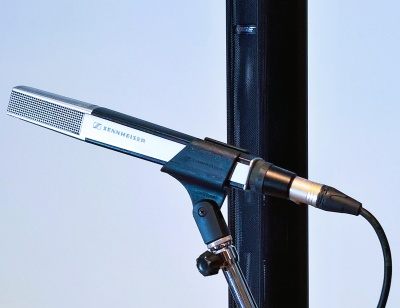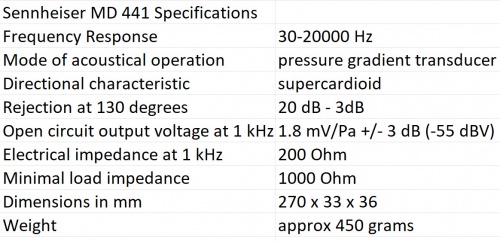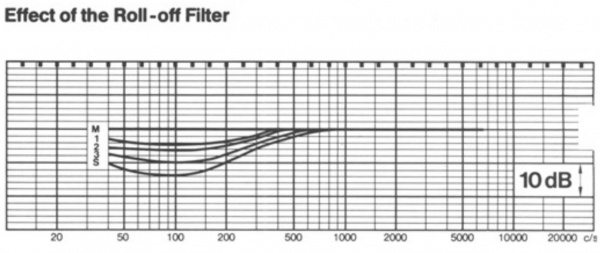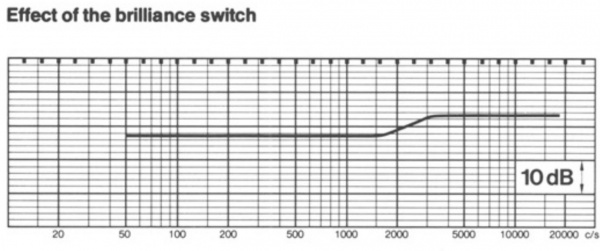Difference between revisions of "Sennheiser MD 441"
m |
m (→Specifications) |
||
| Line 47: | Line 47: | ||
=== Specifications === | === Specifications === | ||
| − | [[File:Sennheiser MD 441 Specifications.jpg| | + | [[File:Sennheiser MD 441 Specifications.jpg|500px]] |
=== Roll-Off Filter === | === Roll-Off Filter === | ||
Revision as of 15:12, 3 April 2022
Contents
The Sennheiser MD 441 is an outstanding microphone for noisy stages. It's an odd nod to nostalgia and showmanship. There's nothing like it on a stage. Sound wise, it and easily stands in for the recently released Sennheiser MD 445 when I need to cut through the mix and get maximum gain before feedback.
The Sennheiser MD 441 has not displaced the Sennheiser MD 445 that I can toss into a gig bag. I might be more discerning about where I'd use the MD 441. When I need to be heard in a loud band setting and want to make a visual statement too, I'll set up the Sennheiser MD 441.
As you should expect from a super cardioid microphone, you want to sing directly into it. However, if you read the instruction manual, there's a hint. When using the brilliance switch, sing over the microphone instead of directly into it. You can use it hand-held and not obstruct your face.
It has a lift in the upper midrange and details in the highs that comes close to sounding like a good condenser microphone. This also helps me to project, compete, and be heard in a busy stage mix.
|
This article expresses my opinion and experience. Please post comments to Twitter @ST_Muso or LinkedIn @STPro. Thank you — ST. |
Sennheiser MD 441-U
| Web page | Sennheiser MD 441-U |
| Type | Dynamic |
| Polar Pattern | high-rejection Supercardioid |
| Specifications | Sennheiser MD 441 Specifications |
| Instruction Manual | Sennheiser MD 441 Manual |
| Quick Guide | |
| ToneMatch Preset | Vocal Microphones / Flat, Vocal zEQ OR Vocal Microphones / Sennheiser MD 431-II |
| Introduced | 1966 ($999 USD) |
| Press Release | |
| Special Features | |
Specifications
Roll-Off Filter
At the end of the microphone there is a unique roll-off filter controlled by a five position rotary switch marked M ... S. (Music ...Speech)
Sennheiser describes it this way.
- When a directional microphone is spoken into from a close distance, the lower frequencies are overemphasized. If this effect is not desired, it may be levelled by aid of a roll-off filter. From the diagram (Figure 5) showing the influence of the roll-off filter, it can be seen that in position M (music) the frequency response curve is not altered in any way. In position S (speech) however, the frequencies below 700 Hz are attenuated by up to 14 dB. Between the positions M and S the low frequency response can be altered in three defined steps.
- The five positions of the roll-off filter can be combined with the two positions of the brilliance switch. In this way, it is possible to choose between ten different frequency response settings
Brilliance Switch
- The MD 441 allows an accentuation in the upper frequency range. It can be chosen using a switch located on the underside of the microphone. This switch can be easily operated using a pencil or small pin. If the switch is brought into position =+*= the frequencies above 3 kHz are accentuated by about 5 dB. This switch position is recommended when the microphone is being used by a vocal soloist. The microphone can then be held vertical in front of the chest and the singer sings practically "over the top". Even then, the sound remains brilliant.




